Lady Justice is one of the most enduring symbols of law and order. One can find her standing outside of courthouses around the world, she represents the ideal that justice should be fair and carried out without prejudice. Her roots are drawn heavily from ancient mythologies. Her lineage can be traced back to the Egyptian goddess Ma’at, who personified truth, order, and balance. The Greeks worshipped Themis, the Titaness of divine law and order. She’s often shown with a scale and sword, elements also associated with the figure we have all come to know today. Themis’s daughter, Dike became the personification of human justice, depicted as a youthful figure holding scales. These mythic ancestors laid the foundation for what would become the Roman Justitia- the figure that directly inspired modern representations.
One of the most distinct features is her blindfold, symbolizing impartiality, the idea that justice should be rendered unbiased by wealth, power, race, or social standing suggesting justice should not be influenced by appearance or a specific preference. Lady Justice is more than a statue, her image is used in legal documents, judicial buildings, and even pop culture.
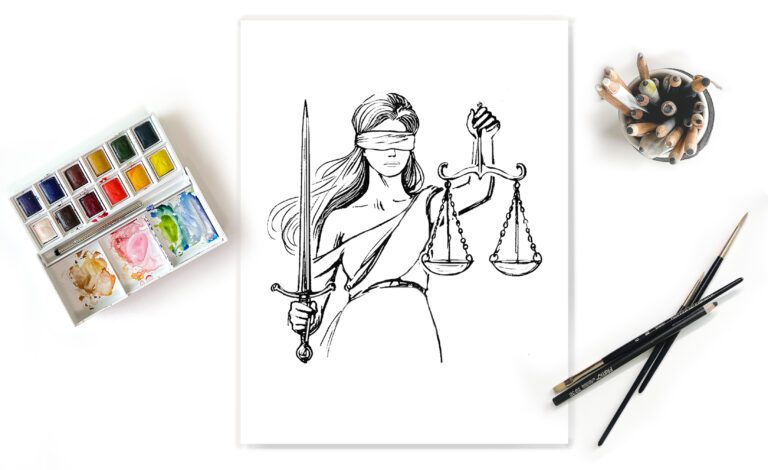
During Women’s History Month, when we reflect on the power, presence, and contributions of women throughout history, Lady Justice stands not just as a legal symbol, but as a tribute to the enduring influence of women in shaping moral codes, ethical systems, and communities. Her presence reminds us that justice—like history—has always been carried, interpreted, and defended by women, even when they were not always seen.
Workshop Introduction
This month’s Art-&-Awareness Workshop aimed to celebrate and empower women through art. The event featured two guest speakers, interactive art sessions, and discussions on the significance of female artists in history. The workshop featured a hands-on art session centered around the symbol of Lady Justice, representing fairness, truth, and equality. Participants were guided through the process of creating their own interpretations of Lady Justice using colored pencils.
Key Announcements:
– Public Charity Status: The Art Spread recently received reclassification as a public charity by the IRS, allowing donors to maximize their tax benefits.
Upcoming Events:
– An art show for K-2 students in Anaheim, California, on April 9th, in collaboration with Villages of California, focusing on mental health.
– A call for donations of artwork and supplies for future events.
Art Tutorial:
Rawan led an art tutorial using the Prismacolor colored pencils and the Women’s History Month Template she designed and made available for free here.
Key Elements of Lady Justice:
– Blindfold: Symbolizes fairness.
– Sword: Represents authority.
– Scales: Signify balance.
Art Techniques: Participants learned various techniques for using colored pencils, including:
– Layering: Building depth and dimension through multiple layers of color.
– Blending: Using lighter colors to create smooth transitions.
– Burnishing: Applying pressure to achieve a polished finish.
Technical Artistic Guidance: Detailed guidance was offered on artistic techniques like blending and layering with colored pencils, emphasizing patience and technique in creating depth and texture.
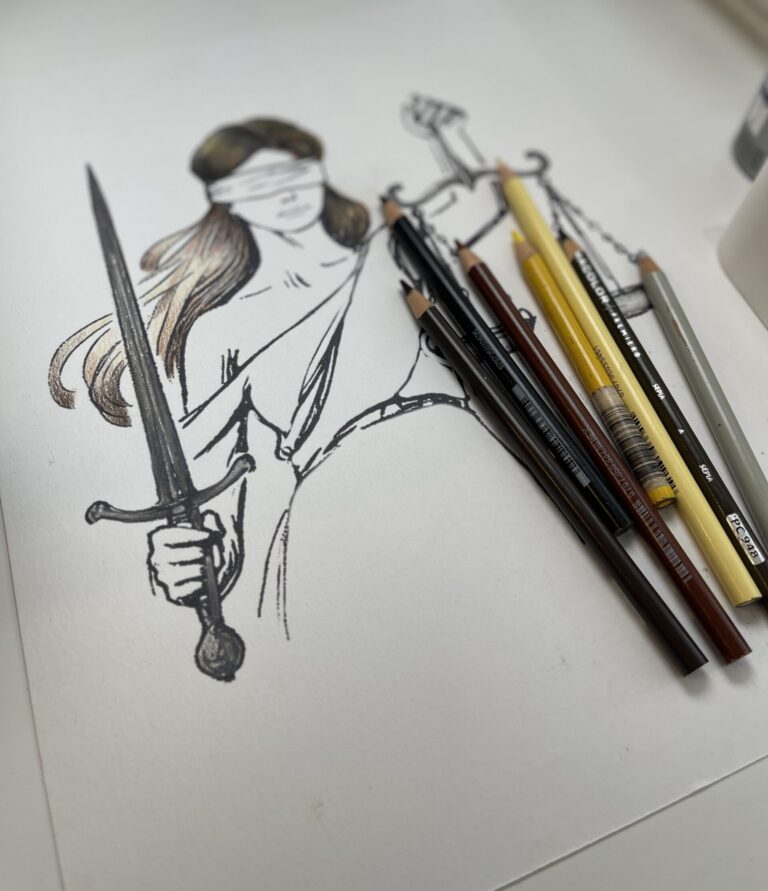
Guest Speakers: The workshop featured two inspiring guest speakers, Lindsey and Shaghayegh (Sha).
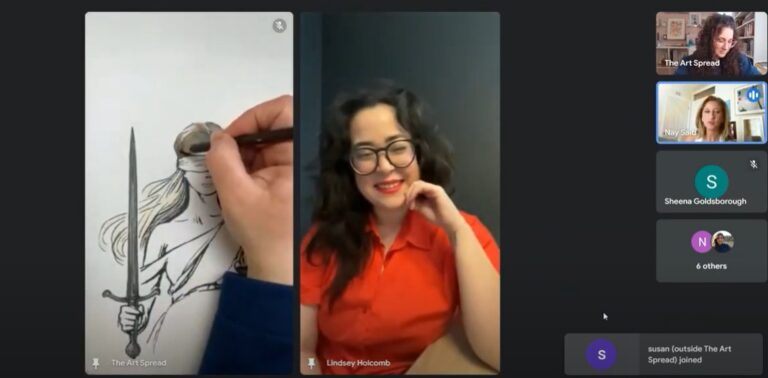
Lindsey Joy Holcomb is an artist who defines resilience and creativity. As a Japanese American interdisciplinary artist, she transforms personal struggle into collective strength. Through her initiative, Colors of MS, Lindsay turned her multiple sclerosis diagnosis into a deeply moving social art project—one that brings color, connection, and healing to others navigating chronic illness. Her work is a testament to the power of vulnerability, the beauty of shared experience, and the way art can illuminate even the most difficult paths in life. In every stroke, every story, Lindsay reminds us that healing isn’t just possible—it’s something we can create together.
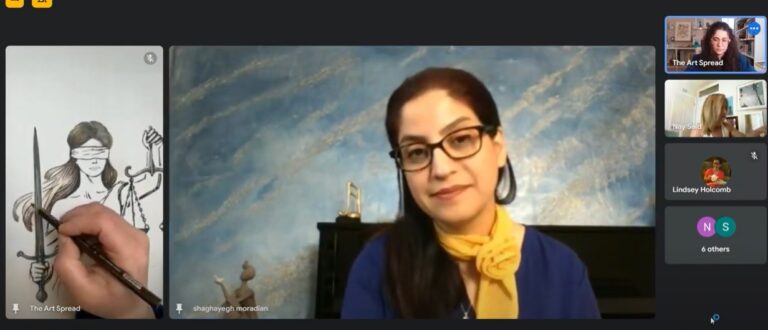
Shaghayegh Moradiannejad is an Iranian social documentary photographer whose work captures both the rawness of human suffering and the strength that rises from it. With a deep focus on women and children affected by war and displacement, her photography offers more than visual storytelling—it is a form of advocacy, remembrance, and healing.
Her powerful project, Ash Milk, centers on the stories of Yazidi women who survived abduction and captivity under ISIS. Rather than presenting them as victims, Shaghayegh honors them as survivors—women reclaiming their narratives, their voices, and their dignity.
Key Takeaways:
Art can serve as a medium for storytelling and raising awareness about social issues. The Women’s History Month Workshop celebrated the contributions of women in the arts and provided a platform for dialogue and creativity. The Art Spread continues to advocate for female artists and aims to create inclusive spaces for artistic expression.
This workshop served as a platform not only for celebrating Women’s History Month but also for engaging artists and the community in meaningful discussions about art, justice, and social change.
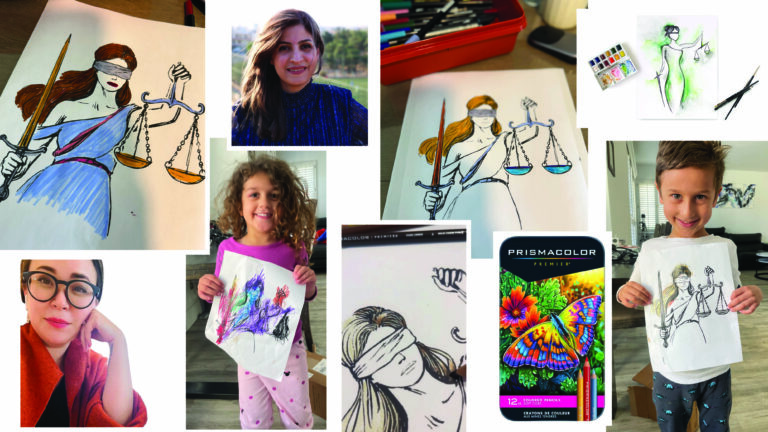
Explore New Artwork and Support the Cause: Visit The Art Spread’s Online Gallery for new pieces from female artists.
Follow Us:
Stay connected with The Art Spread for more exciting events and opportunities to support artists. Follow us on Instagram @the.art.spread and join our newsletter for the latest updates.
Thank you for joining us and making this workshop a memorable and impactful experience!
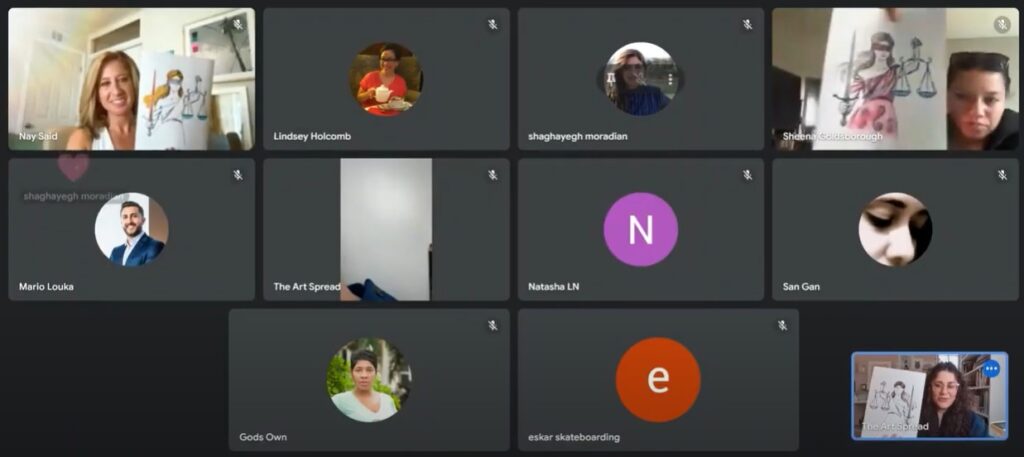
loved this write up and the event!